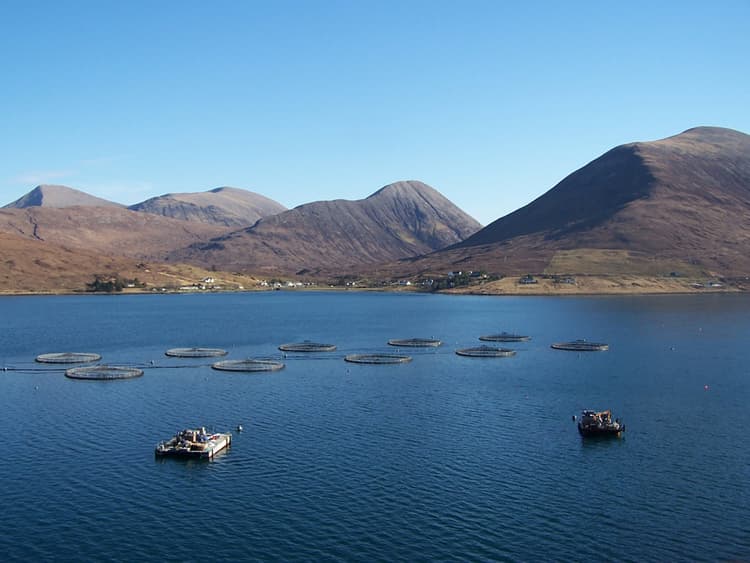Aquaculture
Liam Thomas
6 min read
Listen to this study note
Study Guide Overview
This study guide covers aquaculture, including its definition as the farming of aquatic organisms, different types (freshwater and marine), benefits (efficiency, habitat creation, restocking, economic boost), and environmental concerns (waste management, habitat destruction, disease, genetic impacts). It also connects aquaculture to broader topics like ecology, pollution, and food production, and offers exam tips focusing on understanding the pros and cons, making connections to other units, and emphasizing sustainability. Practice questions covering multiple-choice and free-response formats are included.
#AP Environmental Science: Aquaculture - Your Last-Minute Guide
Hey there, future AP Environmental Science superstar! Let's dive into aquaculture, a topic that's both fascinating and crucial for your exam. Think of this as your cheat sheet for tonight – clear, concise, and packed with everything you need to ace it. Let's get started!
#What is Aquaculture?
Aquaculture, also known as aquafarming, is basically fish farming 🐠 but on a larger scale. Instead of catching wild fish, we're raising them in controlled environments. This includes not just fish but also aquatic plants, mollusks (like clams), and crustaceans (like shrimp and lobsters). Think of it as agriculture, but for the water!

#Image Courtesy of Wikimedia
Aquaculture is the farming of aquatic organisms in controlled environments. It's an important source of food and income globally, and can reduce pressure on wild fish populations.
#Types of Aquaculture
- Freshwater Aquaculture: Raising organisms in freshwater like ponds or tanks.
- Marine Aquaculture: Raising organisms in saltwater, such as ocean cages.
#Benefits of Aquaculture
Aquaculture isn't just about farming fish; it has some pretty cool advantages:
- Efficiency: It's a highly efficient way to produce food, using less space and resources than traditional fishing.
- Healthy Habitats: Well-managed aquaculture can create healthy environments for fish to thrive.
- Restocking: It can help replenish depleted or endangered fish populations.
- Economic Boost: Provides income and jobs for communities.
Aquaculture can be more efficient than traditional fishing because it allows for controlled growth and harvesting.
#Concerns about Aquaculture
But, like everything, there are some downsides:
- Waste Management: Fish waste can pollute surrounding ecosystems, leading to eutrophication (excessive nutrients).
- Habitat Destruction: Aquaculture can sometimes destroy natural habitats.
- Disease Transfer: High densities of fish can lead to easy spread of diseases.
- Genetic Impacts: Farmed fish escaping into the wild can reduce the genetic diversity of wild populations. 💡 This is a big deal because biodiversity is key to a healthy ecosystem!
Don't forget that while aquaculture can reduce pressure on wild fish, it can also create environmental problems if not managed sustainably.
#Key Connections to Other Units
- Ecology: Impacts on biodiversity and ecosystems.
- Pollution: Waste management and eutrophication.
- Food Production: Sustainable food sources and food security.
Aquaculture connects to multiple units, making it a high-value topic for the exam. Be ready to discuss its environmental and economic impacts.
#Memory Aids
AQUA-culture = Water-farming; think of it as farming in the water, just like agriculture is farming on land.
Remember the '3 D's' of aquaculture concerns: Disease, Destruction (of habitat), and Diversity loss (genetic).
#Final Exam Focus
Okay, let's get down to brass tacks. Here's what you absolutely need to nail for the exam:
- Understand the pros and cons: Be ready to discuss both the benefits and environmental issues of aquaculture.
- Connect to other topics: Think about how aquaculture links to biodiversity, pollution, and food production.
- Focus on sustainability: How can aquaculture be done in a way that’s good for the environment?
When answering FRQs, always provide specific examples and explain the mechanisms behind the impacts. Don't just state facts – explain why they matter.
#Last-Minute Tips
- Time Management: Don't get bogged down on a single question. Move on if you're stuck and come back later.
- Read Carefully: Pay close attention to what the question is asking. Underline keywords.
- Stay Calm: You've got this! Take a deep breath and trust your preparation.
#Practice Questions
Practice Question
Multiple Choice Questions
-
Which of the following is a potential negative environmental impact of aquaculture? (A) Increased biodiversity in wild fish populations (B) Reduced risk of disease in farmed fish (C) Eutrophication of surrounding waters (D) Decreased efficiency in food production
-
A major concern associated with the escape of farmed fish into the wild is: (A) Increased genetic diversity of wild fish (B) Decreased competition for resources in wild populations (C) Potential for disease transmission to wild populations (D) Enhanced habitat for native species
Free Response Question (FRQ)
Aquaculture is a rapidly growing industry that provides a significant portion of the world's seafood. However, it also presents several environmental challenges.
(a) Describe two potential benefits of aquaculture. (b) Describe two potential environmental problems associated with aquaculture. (c) Explain how the escape of farmed fish into the wild could impact the genetic diversity of wild fish populations. (d) Suggest one method to mitigate one of the environmental problems you described in part (b).
Scoring Guidelines
(a) (2 points)
- One point for each of the two correct benefits. Examples include: increased food production, reduced pressure on wild fish populations, economic benefits, etc.
(b) (2 points)
- One point for each of the two correct environmental problems. Examples include: water pollution from waste, habitat destruction, disease outbreaks, etc.
(c) (2 points)
- One point for identifying that farmed fish have low genetic diversity.
- One point for explaining that interbreeding with wild fish will reduce the overall genetic diversity of the wild population.
(d) (1 point)
- One point for suggesting a method that mitigates an environmental problem from part (b), such as: implementing better waste management systems, using closed containment systems, etc.
Alright, you've got this! Go rock that AP Environmental Science exam! 🎉
Continue your learning journey

How are we doing?
Give us your feedback and let us know how we can improve





